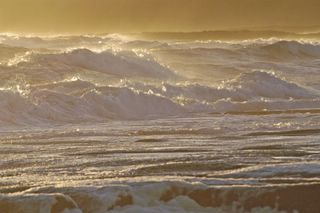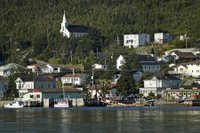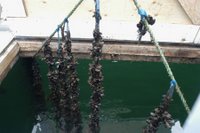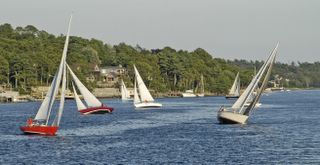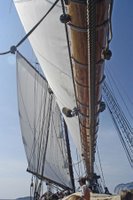August 24, 2006
This is what we did on Thursday and Friday (24th and 25th)……
On Thursday, we packed up to move from Port Au Choix. The wind howled all night and most of us didn’t sleep very well! The ocean waves continued to pound the coast—a beautiful sight—but the wind just cut right through everything we wore. Many of us are also watching the waves because we are going to board the ferry back to Nova Scotia soon and we don’t want to be seasick.
Our destination was Doyles, NF. It is a small town with a campground about 25 miles north of Port Aux Basques—the Newfoundland- Nova Scotia ferry terminal. Although the drive along the coast was lovely, the wind was relentless and when you combine that with the bumpy Newfoundland roads—it was long 300 miles. We kicked back when we arrived, threw our last steaks on the grill (have to use up our beef before we cross the border) and went to bed early since we have to leave our campground at 5:00 am for the ferry.

Bright and early the next morning—wait it was still dark!—we got up and left for our 25 mile drive to the ferry terminal. The procedures were similar to our previous ferry crossing—hurry up and get there to be lined up and wait for loading. All went smoothly though thanks to the great planning (as usual) by our group leaders.
The first hour or so of the 6 hour trip were a bit rocky but eventually the ocean smoothed out and with a bit of a tailwind (or is it favorable seas?) we actually arrived in North Sydney, Nova Scotia ahead of schedule. Our destination for the next 2 days is Louisburg, Nova Scotia, about 40 miles south of the ferry terminal. Bright sun, blue skies and a gorgeous waterfront campground greeted us in Louisburg. Louisburg is on Cape Breton Island—the northern section of Nova Scotia.
All of us were pretty tired (up at 4 am!) but we had tickets for a performance at the Louisburg Playhouse after dinner. We walked up the hill behind the campground to the playhouse. None of us was too sure what we were going to see except we had been told it would be a good musical performance.
The Louisburg playhouse has an interesting history. In 1993, Disney announced that Squanto: A Warrior’s Tale was to be filmed at Louisburg. Filming required the construction of a 17th century timber-style theater that was modeled after Shakespeare’s original Globe Theater in London. The theater was featured in several scenes in the movie. After filming at the Fortress of Louisburg (we visit there tomorrow) was complete, the theater was donated to the town. It was dismantled and moved from the Fortress to its current site along the waterfront. It originally opened as an open air theater and later the town raised money to enclose it and add heating and lighting.
Our show was put on by a group called Lyrics and Laughter. The show is described as: “A spirited performance of ape Breton music and comedy in the historic atmosphere of the playhouse”. Well, in short it was fantastic!! The six musicians sang, danced and played traditional Scottish folk songs, Irish folk songs as well as original songs. They played piano, guitar, fiddle, bodhran( an Irish drum), banjo, flute, tin whistle and accordion. It was a high-energy performance that woke everyone up. What a great day to finish the day.

